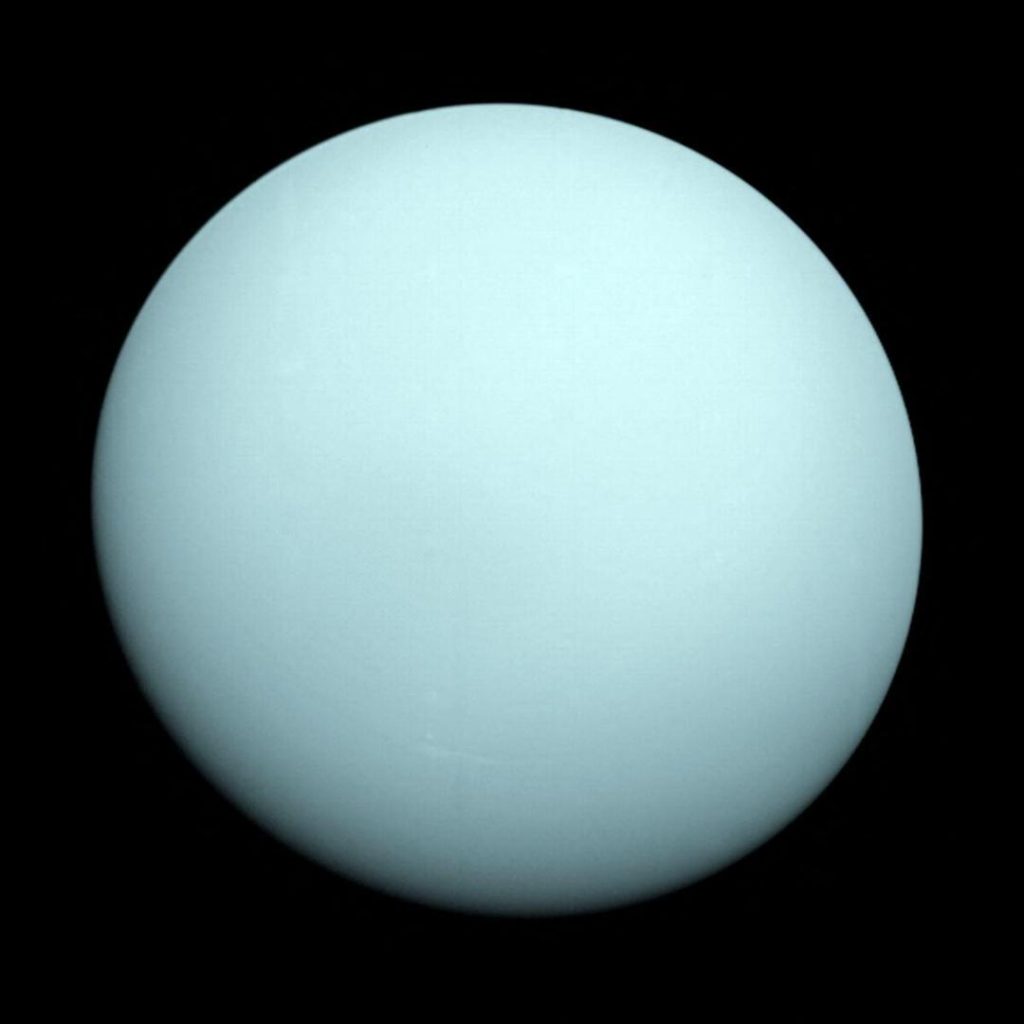
A Day on Uranus is 28 Seconds Longer than Estimated: Research
The planet Uranus has long been a subject of fascination for astronomers and scientists. Its unique tilt, which causes extreme seasons, makes it one of the most fascinating planets in our solar system. Recent research has shed new light on the planet’s rotation period, revealing that a day on Uranus is 28 seconds longer than previously estimated.
The research, published in the journal Nature Astronomy, analyzed 11 years of observations taken by the Hubble Space Telescope. The team of scientists, led by Dr. Michael H. Wong from the University of California, Berkeley, used this data to refine the estimate of Uranus’ rotation period.
According to the research, a day on Uranus lasts 17 hours, 14 minutes, and 52 seconds. This is 28 seconds longer than the estimate made by NASA’s Voyager 2 spacecraft, which flew by Uranus in 1986. The new estimate is significantly more accurate than the previous one, thanks to the continuous observations made by the Hubble Space Telescope.
“The continuous observations from Hubble were crucial,” said Dr. Wong, lead author of the study. “The telescope allowed us to monitor Uranus’ rotation period with unprecedented precision.”
The Hubble Space Telescope has been in operation for over 25 years, and its ability to observe the same object for extended periods of time has made it an invaluable tool for astronomers. The telescope’s observations of Uranus began in 2003 and continued until 2014, providing a wealth of data that was used to refine the estimate of the planet’s rotation period.
The research used a technique called “time-series analysis” to study the variations in Uranus’ brightness as it rotated. By analyzing the data, the team was able to identify the planet’s rotation period with a high degree of accuracy.
The new estimate of Uranus’ rotation period has significant implications for our understanding of the planet’s internal structure and composition. The longer rotation period suggests that Uranus may have a slightly slower rotation rate than previously thought, which could affect the way it generates its magnetic field and the patterns of its internal heat circulation.
The research also highlights the importance of continued observations of Uranus and other planets in our solar system. As new technologies and telescopes are developed, scientists can continue to refine our understanding of the planets and their properties.
The study’s findings have been published in Nature Astronomy, and can be accessed online. The research was funded by the National Science Foundation and the NASA Hubble Space Telescope Program.
News Source:






